Types and varieties of almonds
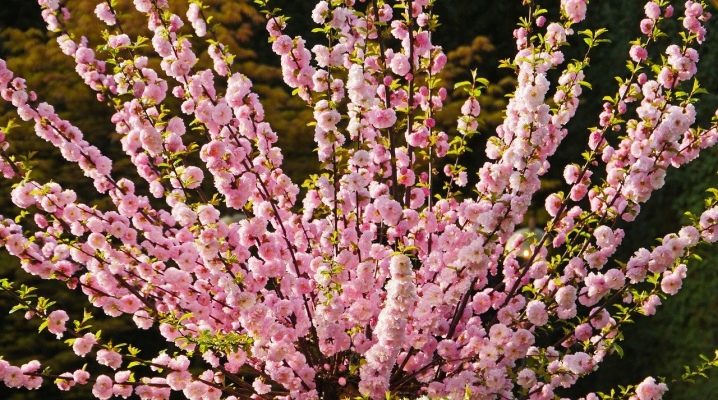
The species and varieties of such a popular plant as almonds are incredibly diverse. Gardeners distinguish double pink and its ordinary types, which look especially good in the landscape of a suburban area or park, the most decorative and easy to maintain. "Dessert" and "Nikitsky 62", "Victoria" and other varieties of this culture often become a true decoration of the landscape at the time of flowering, strewn with delicate buds on the crown of the tree, filling the air with an exquisite delicate aroma.

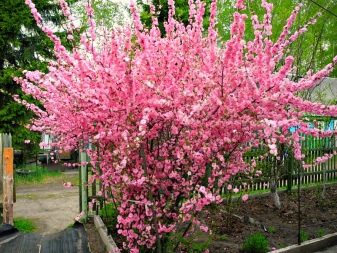
Common almonds
The Latin name for this type of almond sounds like Prunus dulcis. It can be represented by shrub or woody forms. The plant of the pink family is distinguished by lush flowering. The budding period, depending on the climatic zone, begins from February to April.
Within the species, there are 2 main subtypes of common almonds.
- Sweet... It has a pleasant taste. Edible kernels are of high culinary value.
- bitter... Inedible variety. Fresh kernels inside the seeds contain hydrocyanic acid, a toxic component that is dangerous when ingested. When heat treated, they lose their bitterness. The main application is to obtain oils for cosmetic and culinary purposes.
Common almonds are found naturally in calcium-rich soils, mainly in mountainous areas, as well as on the coasts. Usually grows in groups with a distance of 5-7 meters between trees. In planting, 3-4 plants are collected. The culture is photophilous, tolerates a lack of water well, and is relatively frost-resistant.
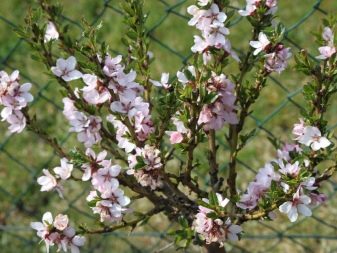
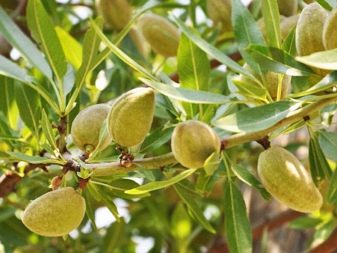
At the time of fruiting, common almonds enter the 4-5 year of life, retains this ability up to 50 years. Reproduction of the plant occurs by shoots from stumps, root suckers, and also seeds. Most often, this species takes the form of a shrub, trees are much less common. Characteristic features of the culture:
- height - 4-6 m;
- profuse branching;
- the crown is lush, with short generative and long vegetative shoots;
- leaves are lanceolate, green, with a pointed tip;
- flowers are single, up to 25 mm in diameter;
- petals are white or light pink;
- fruits are monocotyledons with a green pericarp;
- the bones are embossed, with pits or grooves.
Common almonds are especially valued as a melliferous plant, rich in pollen.... Plants are bee-pollinated, in the presence of a sufficient number of insects, they can increase productivity by 30%.
The trees can be used as rootstock for other stone fruit crops in arid areas.

Description of terry almonds
This variety is also known as the ornamental triloba almond or Prunus triloba. Previously, it was ranked as a separate genus of luizeania, but the modern classification determines exactly this belonging of plants. Deciduous shrub, less often a tree from 2 to 5 m high, attracts attention with lush pink flowers, rather large, growing in pairs or singly.

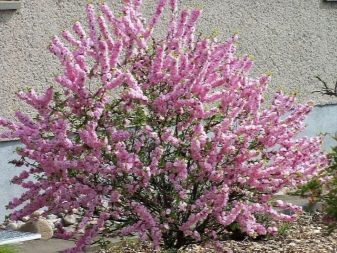
The three-lobed almond has leaves of an ovoid or oblong shape, slightly pubescent from the inside. The ovaries and fruits are also covered with hairs. Plants are found in East Asia, in mountainous woodlands with altitudes ranging from 600 to 2500 m. In Russia, it is grown as an ornamental shrub in the climate of the middle zone. It can grow in the mountainous Altai climate.
Terry three-lobed almonds begin to bloom later than others, in early May.Its branches are suitable for cutting, stand well in the water. The shade of petals in cultivars can range from pastel pink to crimson. The three-lobed almond has a crown similar to a plum and divides naturally into 3 segments.

A number of the most popular varieties of this beautiful and magnificent flowering plant can be distinguished.
- "Chinese". The variety is obtained by grafting three-lobed almonds onto felt cherries, due to which it becomes very similar to sakura. The flowers look rather modest, they are smaller. The budding period is long.
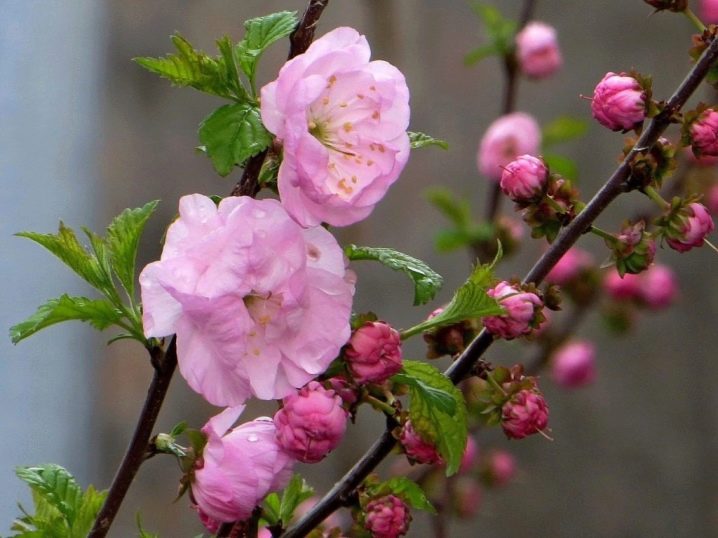
- Kievskaya. Shrub-shaped with lush foliage. It blooms with beautiful large flowers with corollas of bright color.

- "Tanyusha". One of the most decorative varieties. Blooms in early May. It is famous for its very fluffy corollas, reminiscent of pompons. Each has 30-40 slightly curved petals.

- Rosenmund. Compact ornamental almond bushes of this variety are well suited for decorating small areas. Rosenmund has a long flowering time of more than 3 weeks. The resulting buds are very double, of a pure and delicate pink shade.
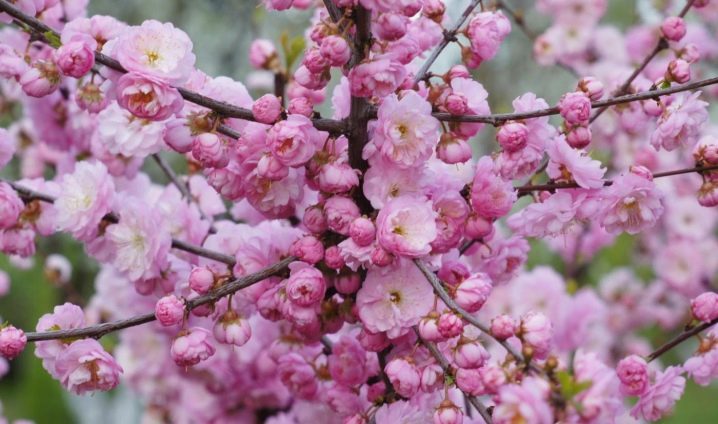
- "Captivity". One of the most famous varieties, forms highly branching bushes with a lush crown no more than 2 m high. Flowering begins simultaneously with the appearance of leaves, corollas are large, up to 40 mm in diameter. The forming embryos do not give full-fledged fruits, they crumble. The variety is exclusively for decorative purposes, has no economic value.
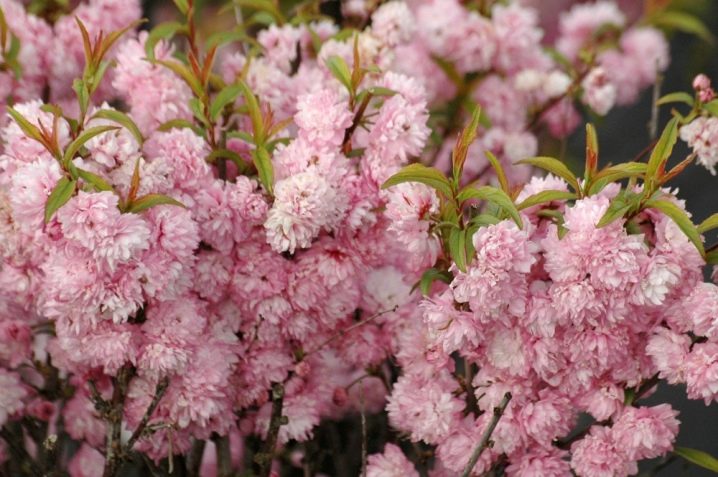
- Vesnyanka. A lush flowering shrub with medium-sized corollas. It is highly valued for its resistance to major crop diseases.
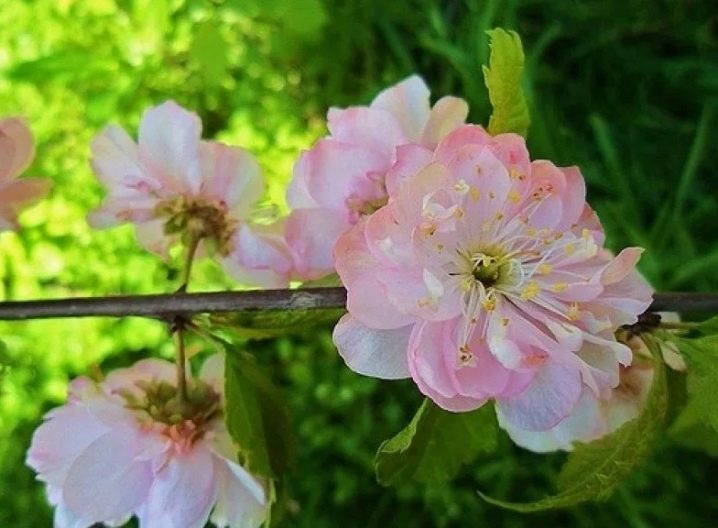
- "Crimson". Forms low-growing, broadly spreading bushes. The bloom is very abundant, the color of the petals is purple-crimson.
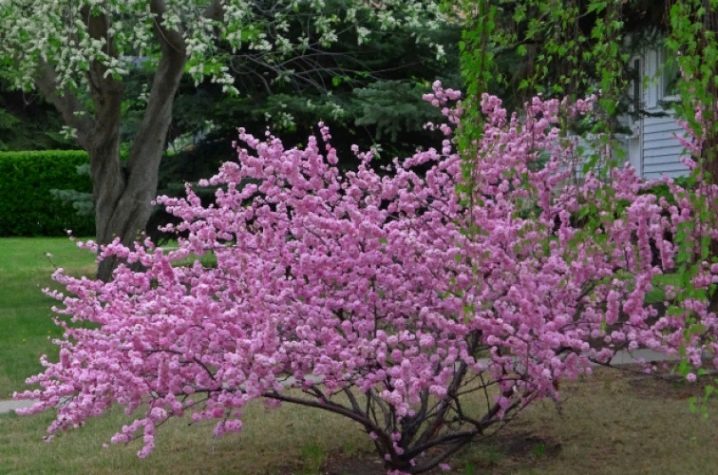
Plants can be formed not only in the form of a shrub. They look most impressive in the form of miniature trees on a low trunk.
Other species and varieties
Decorative and edible varieties of almonds are successfully grown throughout Russia. Among them there are those that are of economic value, as well as incredibly beautiful options that transform the landscape. In addition to the common and three-bladed type, the following options are popular.
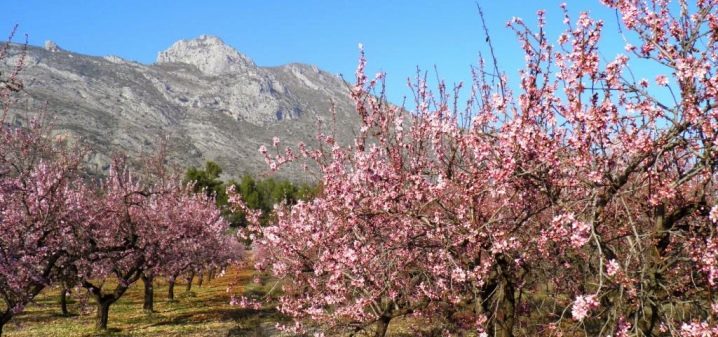
Georgian almonds
Wild shrub culture, forms shoots up to 1.5 m in height. It does not differ in abundant branching, but it intensively gives root shoots, multiplies easily. Georgian almonds bloom in May, with large bright buds. From the 7th year of life, it begins to bear fruit. The species is frost-resistant, with good immunity, the most widespread in the Caucasus, in hollows and on the edges.
The best variety of Georgian almonds is considered «Dessert". It forms much larger trees, up to 5 m tall, with an oval-pyramidal crown. The subspecies blooms in the 2nd decade of May with bright dark pink corollas. Bears fruit in July. It is famous for its excellent nut flavor.
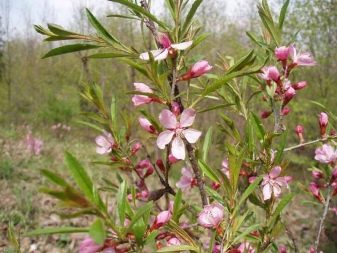
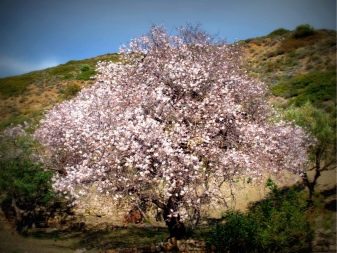
Ledebour
A magnificent variety of almonds found naturally in the Altai Mountains. Shrub-type plants, intensively branching, with large leaves. The flowers are quite large, simple, up to 3 cm in diameter. Its most famous variety is considered to be "Fire Hill" with bright scarlet buds that bloom towards the end of spring. The plant is bee-pollinated, not too demanding on the composition of the soil.
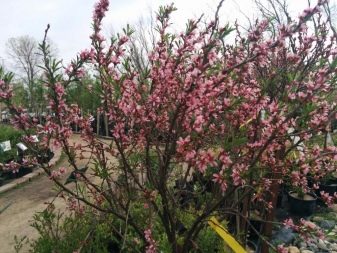

Steppe almond, or bean
A rather banal name hides a very beautiful subspecies of this ornamental plant. It forms dwarf trees, reaching a height of no more than 1.5 m. Plants are resistant to cold and drought, not afraid of steppe almonds and strong winds. Deciduous culture is characterized by slow development, forms a lush spherical crown with reddish shoots.
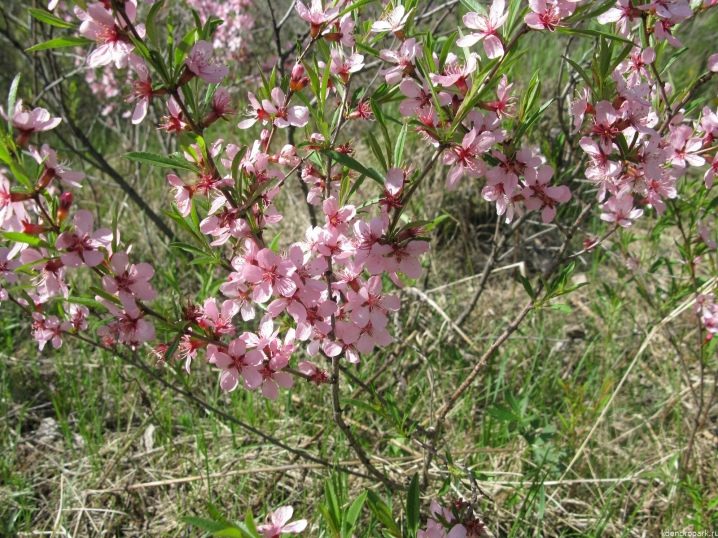
The bean tree blooms in March-April, forming single large buds of white or pink color. The duration of this period is up to 2 weeks. Here are its popular varieties.
- "Pink flamingo". One of the earliest varieties with small flowers of a delicate shade. Differs in decorative appearance.
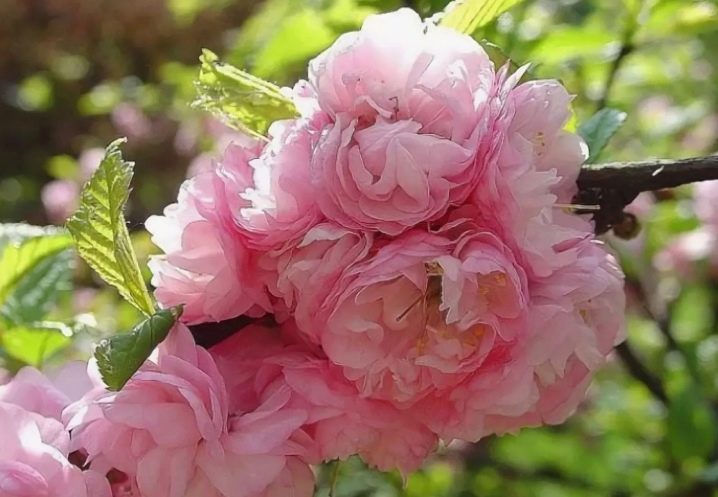
- "White Sail". An exquisite bean variety with small flowers, the color of the first snow. The plant is thermophilic, tolerates drought well, but dies in the cold.
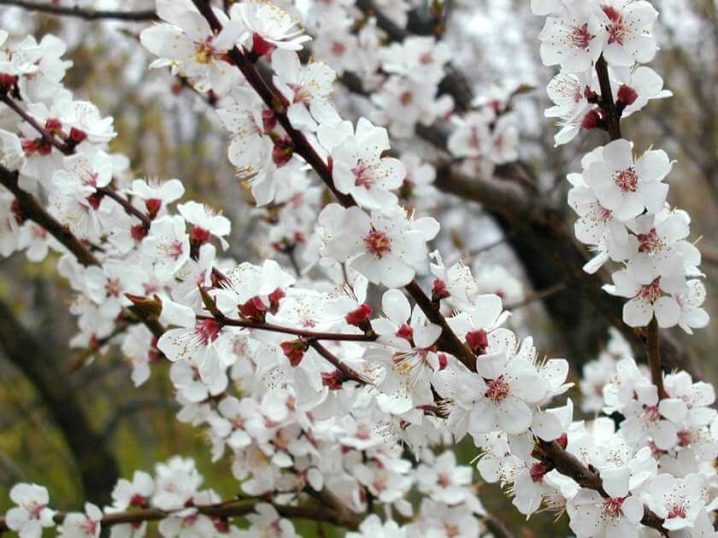
- "Anyuta". A variety with edible nuts and a compact crown. It begins to bloom from the 1st decade of April, the buds are pink, rather large.
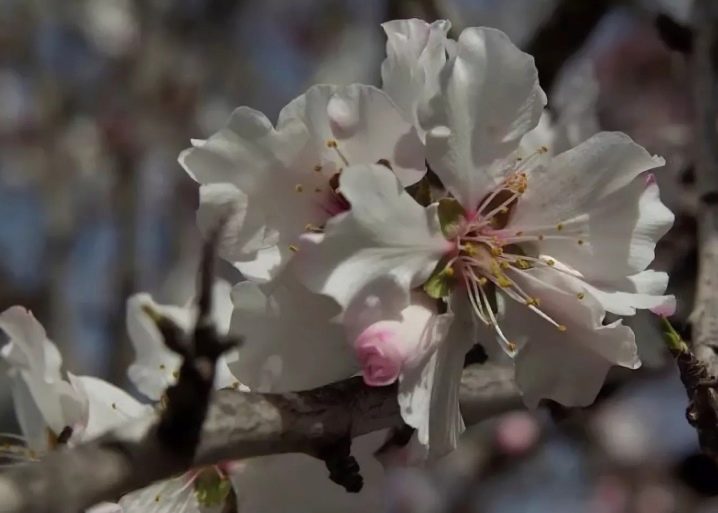
- "Dream". An ornamental variety with lush pink buds. Quite picky about growing conditions, does not tolerate sudden changes in temperature, drafts. Grows best in open, sunny areas, sheltered from the wind.
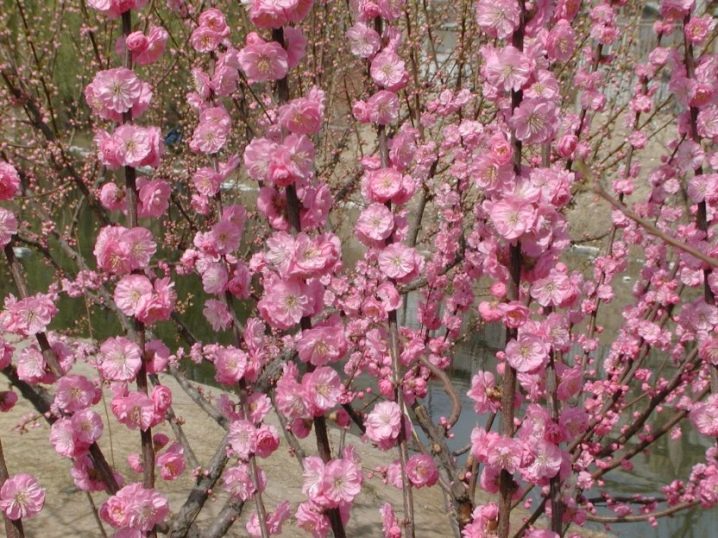
- "Pink Mist". A photosensitive variety that blooms more abundantly in sunny areas, but shorter in time than in the shade. It is valued for its large, evenly colored rose buds.
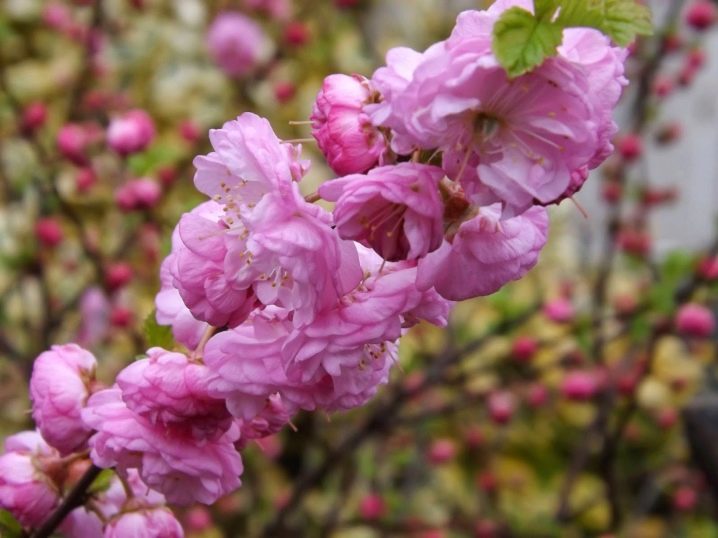
Almond Petunnikov
A variety that forms compact bushes no more than 1 m tall. The crown width reaches 0.8 m, it forms an almost regular circle. At the time of flowering, the plant enters the 3rd year of life. This period lasts up to 2 weeks, in May. The flowers on the shoots are pink, orange or light brown, medium to small in size, pubescent.
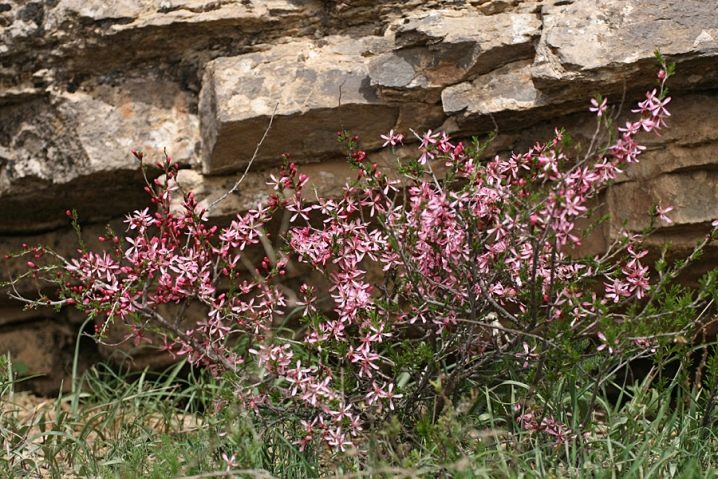
Common almonds are also presented in a wide variety. Plants are not as decorative as terry "Tanyusha", but also worthy of attention. The most popular option is considered to be the variety "Victoria", obtained in the first half of the XX century from free pollination of plants of the variety "Nikitinsky 62" (also referred to as "Nikitsky 62"). "Victoria" bears sweet fruits, blooms very early, in early March, forming bright pink buds on bare branches.
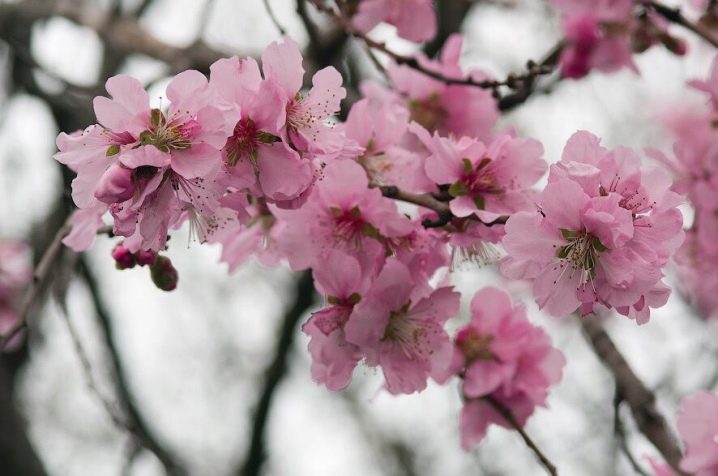
And also among the popular varieties of common almonds include "Foros" and "Antik" Crimean selection, with an exquisite taste of nuts. All these plants are successfully cultivated on the territory of the Russian Federation.
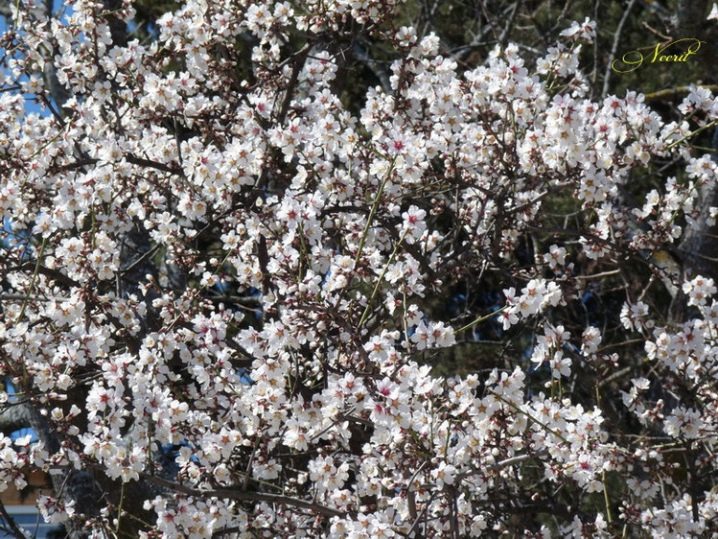
Use in landscape design
Almonds are widely used in landscape design, and in many regions of the world they are even one of the main tourist attractions. People come to Israel and Italy, France and Spain, Morocco and the USA to admire its bloom. On the territory of the site, group planting of almonds can be used as soil protection.
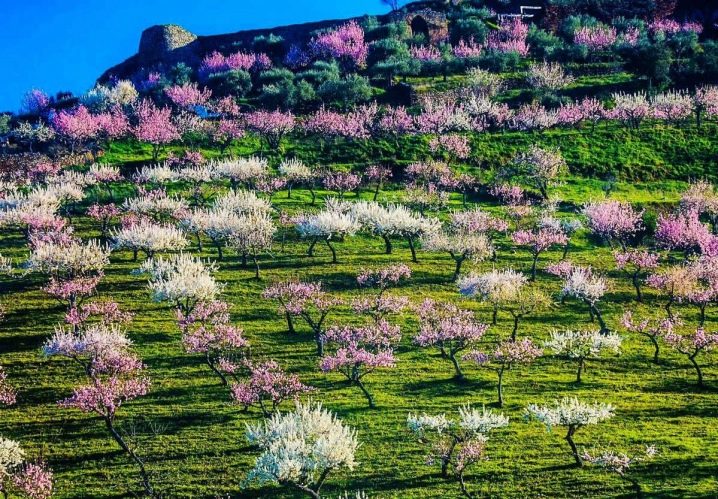
This magnificent deciduous plant has many uses in landscaping. Tall varieties look spectacular in single plantings, but for cross-pollination they will need another bush or almond tree nearby... A well-groomed lawn or a neatly laid out hill of stones will help to frame the tapeworm.

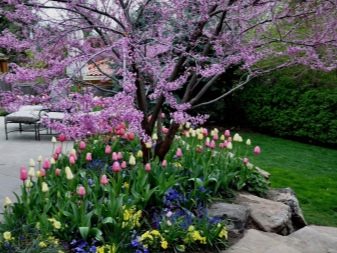
As a backdrop, sprawling almond bushes can be a great addition to flower beds and stairs, when planted in rows, the plants elegantly frame driveways and promenades. Low-growing and dwarf almond species look good surrounded by conifers, rock slides.
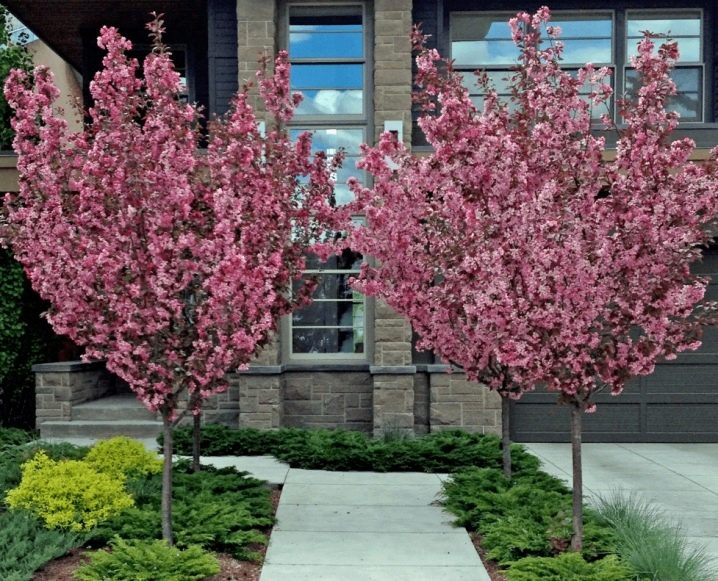
The elegant spherical-topped plants are perfect for incorporation into regular or French-style parks.
Graceful terry bushes are usually selected so that their flowering periods alternate. So you can achieve an impressive decorative effect, fill the garden with fragrance throughout the spring period.
Varying the height of planting, the color of the buds, designers create luxurious landscape landscapes even in limited areas.
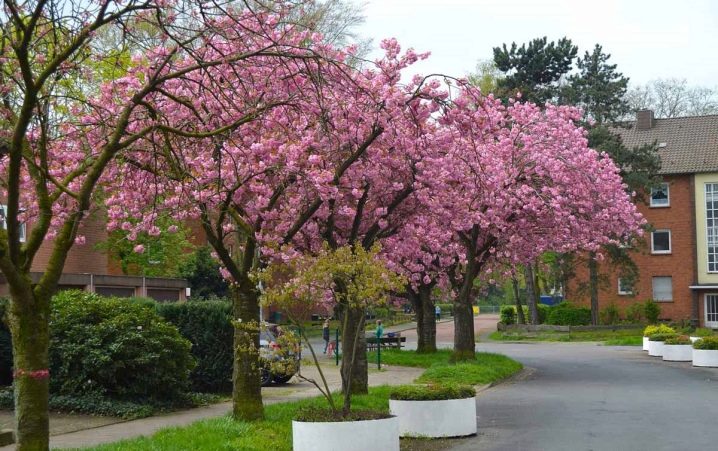







The comment was sent successfully.